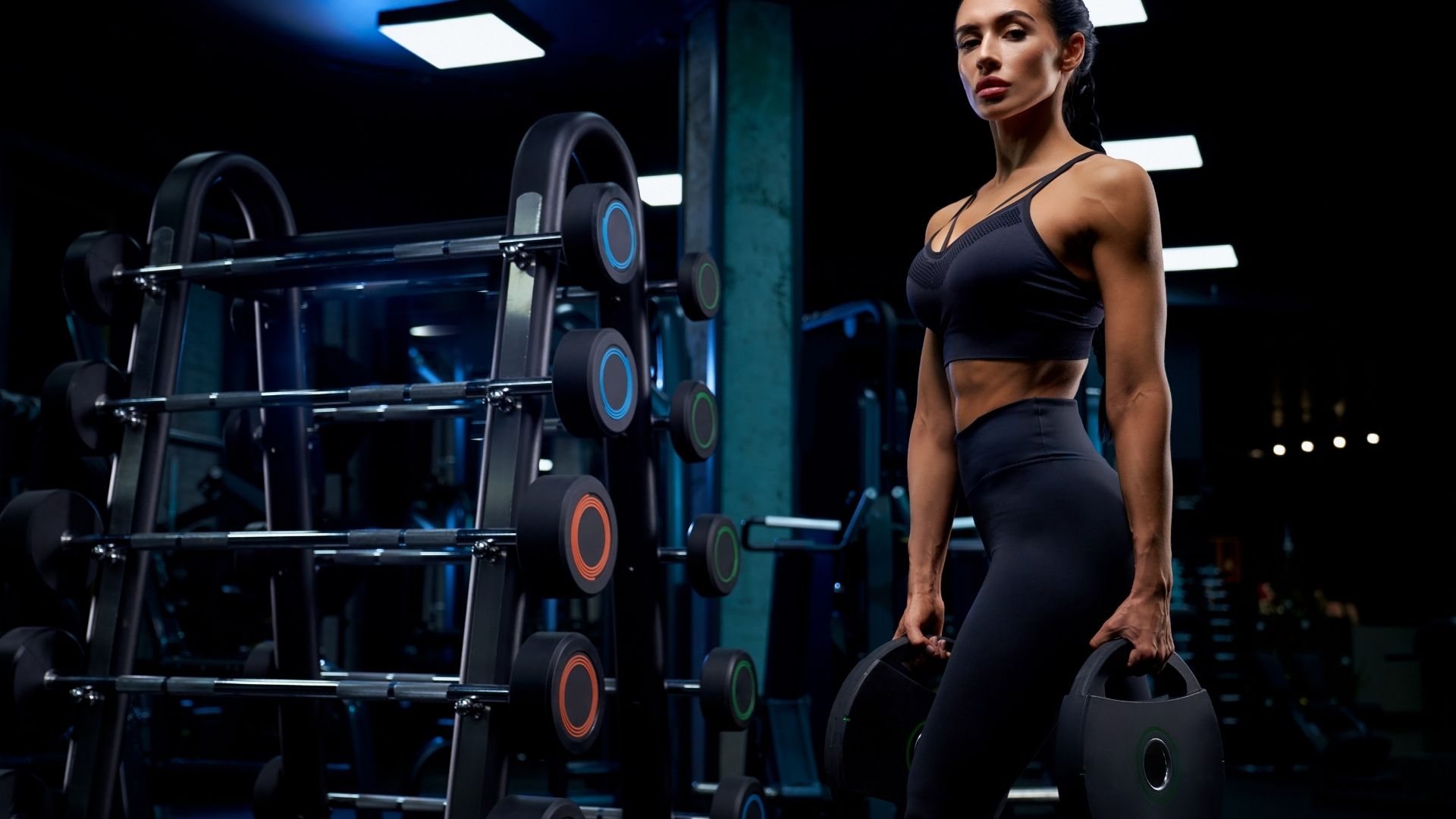Squatting is a fundamental exercise that offers numerous benefits for overall strength and fitness. Determining the appropriate weight for squatting is essential to ensure safety, progress, and tailored results.
While age is a consideration, it is not the sole factor in determining squatting weight. In this comprehensive guide, we will delve into various aspects that influence the weight you should squat, including your fitness level, experience with strength training, and individual goals.
Whether you are a beginner or have prior experience, this article will provide you with expert guidelines to start your squatting journey, develop proper form and technique, and progressively increase the weight for optimal results.
Additionally, we will explore the importance of working with qualified fitness professionals and highlight the key principles of consistency, form, and progression to maximize your strength training endeavors.
Weight you should squat at 30.
Determining the weight you should squat at 30 depends on your fitness level, experience, and any limitations. Start with bodyweight squats, then gradually add resistance. Consult a fitness professional for guidance. Focus on proper form, listen to your body, and avoid excessive weights. Warm up, maintain good form, and incorporate squat variations. Work with a professional for personalized recommendations.
Depending on fitness level, experience, and any limitations.
When determining the weight you should squat at 30 years old, it’s crucial to consider your fitness level, previous experience with squatting, and any limitations you may have. Your fitness level reflects your overall strength, conditioning, and familiarity with resistance training.
If you’re a seasoned athlete, you may be able to handle more weight compared to someone who is just starting their fitness journey.
Experience with squatting also plays a role, as it develops your technique, stability, and confidence.
Additionally, any existing injuries or limitations need to be taken into account. These can include joint issues, muscle imbalances, or mobility restrictions.
It’s important to be mindful of these factors to avoid exacerbating any conditions or risking injury.
To determine an appropriate weight for squatting, it’s advisable to start with bodyweight squats.
This allows you to focus on mastering the movement pattern, developing proper form, and improving mobility and stability.
Assess Your Fitness Level.
Your current fitness level sets the foundation for your squatting prowess. Consider factors like strength, flexibility, and overall conditioning.
If you’ve been hitting the gym regularly, your body might be primed for greater challenges. But if you’re a newbie, don’t fret! We all start somewhere, and mastering the squat technique is paramount.

Tap into Previous Experience:
Have you squatted before? Assessing your prior squatting experience provides valuable insights into your capabilities.
If you’ve been incorporating squats into your routine, you may be able to handle more weight compared to a beginner.
Recall your past achievements and embrace them as a stepping stone toward your next squatting milestone.
Address Injuries and Limitations:
Prioritize your safety by acknowledging any existing injuries or physical limitations. These factors will influence the weight you should squat.
Consult with a healthcare professional or a qualified trainer who can help tailor your squatting regimen to accommodate your specific needs.
Remember, a personalized approach is the key to progress.
Now, let’s focus on the technique and progression that will lead you to success:
Master the Technique.
Before challenging yourself with heavier weights, perfecting your squat form is paramount. Engage your glutes, quadriceps, hamstrings, and core with precision.
Seek guidance from a fitness professional who can provide detailed instructions on proper technique.
This foundation ensures optimal muscle activation and minimizes the risk of injury.
Gradual Progression is Key.
Rome wasn’t built in a day, and the same applies to your squatting prowess. Start with bodyweight squats to refine your movement pattern and build stability.
As your confidence grows, gradually introduce resistance using barbells or dumbbells. Remember, a gradual increase in weight will help you avoid plateaus and maintain proper form.
Listen to Your Body:
Your body knows best. Pay attention to the signals it sends during your squatting journey. Progress at a pace that challenges you without compromising your form.
Pushing your limits is admirable, but always prioritize safety and injury prevention. Trust the process and celebrate small victories along the way.
Embrace Variation and Warm-Up
Spice up your routine with different squat variations. Experiment with front squats, goblet squats, or split squats to target various muscle groups and keep your workouts exciting.
Don’t forget to warm up adequately before each squatting session. Mobilize your joints and activate your muscles to ensure a productive and injury-free workout.
Seek Expert Guidance.
To unlock your squatting potential fully, consider partnering with a certified personal trainer or strength and conditioning specialist.
These professionals possess the knowledge and experience to assess your individual needs and goals.
They will provide personalized recommendations, helping you navigate the squatting landscape with confidence and efficiency.
Now that you’re armed with the knowledge to determine the perfect weight for your squats at 30 years old, it’s time to unleash your potential.
Remember, progress is a journey, and your dedication and consistency will yield remarkable results. Embrace the challenge, stay focused, and witness your squatting prowess soar to new heights!
Breakdown for consideration.
Here’s a breakdown of considerations for determining the weight you should squat at 30 years old:
| Factors to Consider | Description |
|---|---|
| Fitness Level | Assess your current fitness level, including strength, conditioning, and overall physical abilities. |
| Experience | Take into account your previous experience with squatting and resistance training, as it affects your familiarity with the exercise. |
| Limitations and Injuries | Consider any existing limitations or injuries you may have, such as joint issues, muscle imbalances, or mobility restrictions. |
| Form and Technique | Prioritize proper form and technique to ensure optimal muscle engagement and minimize the risk of injury. |
| Gradual Progression | Start with bodyweight squats to master the movement pattern and gradually increase resistance over time. |
| Listening to Your Body | Pay attention to your body’s signals, progress at a pace that challenges you without compromising form or risking injury. |
| Warm-up | Warm up adequately before each squatting session to prepare your muscles and joints for the exercise. |
| Variations | Incorporate different squat variations (e.g., front squats, goblet squats, or split squats) to target various muscle groups and add variety to your training routine. |
| Professional Guidance | Consider working with a certified personal trainer or strength and conditioning specialist to receive personalized recommendations based on your specific needs and goals. |
While this information is not presented in a tabular form, it provides a clear breakdown of the factors to consider when determining the weight you should squat at 30 years old.
Conclusion.
In conclusion, the weight you should squat at 30 years old depends on factors such as your fitness level, experience, and limitations.
It is important to approach squatting with proper form, gradually increase the weight over time, and listen to your body to avoid injury.
Starting with bodyweight squats, mastering the technique, and incorporating squat variations can enhance your progress.
Consulting a fitness professional will provide personalized guidance and help you establish an appropriate starting weight.
Remember to prioritize safety, focus on form, and strive for steady progress on your squatting journey.

Hey there, it’s Mike Rrsq, the Editor-in-Chief over at Jsquat.com, and I’m absolutely obsessed with all things squat fitness! I’ve been lucky enough to get some serious recognition for my work in this field. With a solid background in the fitness and wellness industry, I’ve been there right from the get-go, helping shape this website into what it is today.
You see, I’m not just the boss around here; I’m also a passionate contributor. I love sharing my insights through my articles, and trust me, they’re not your run-of-the-mill stuff. Each piece I write is a labor of love, filled with my expertise and real-world experience in the fitness universe. So, if you’re into fitness and looking for some inspiration, you’re in the right place!

